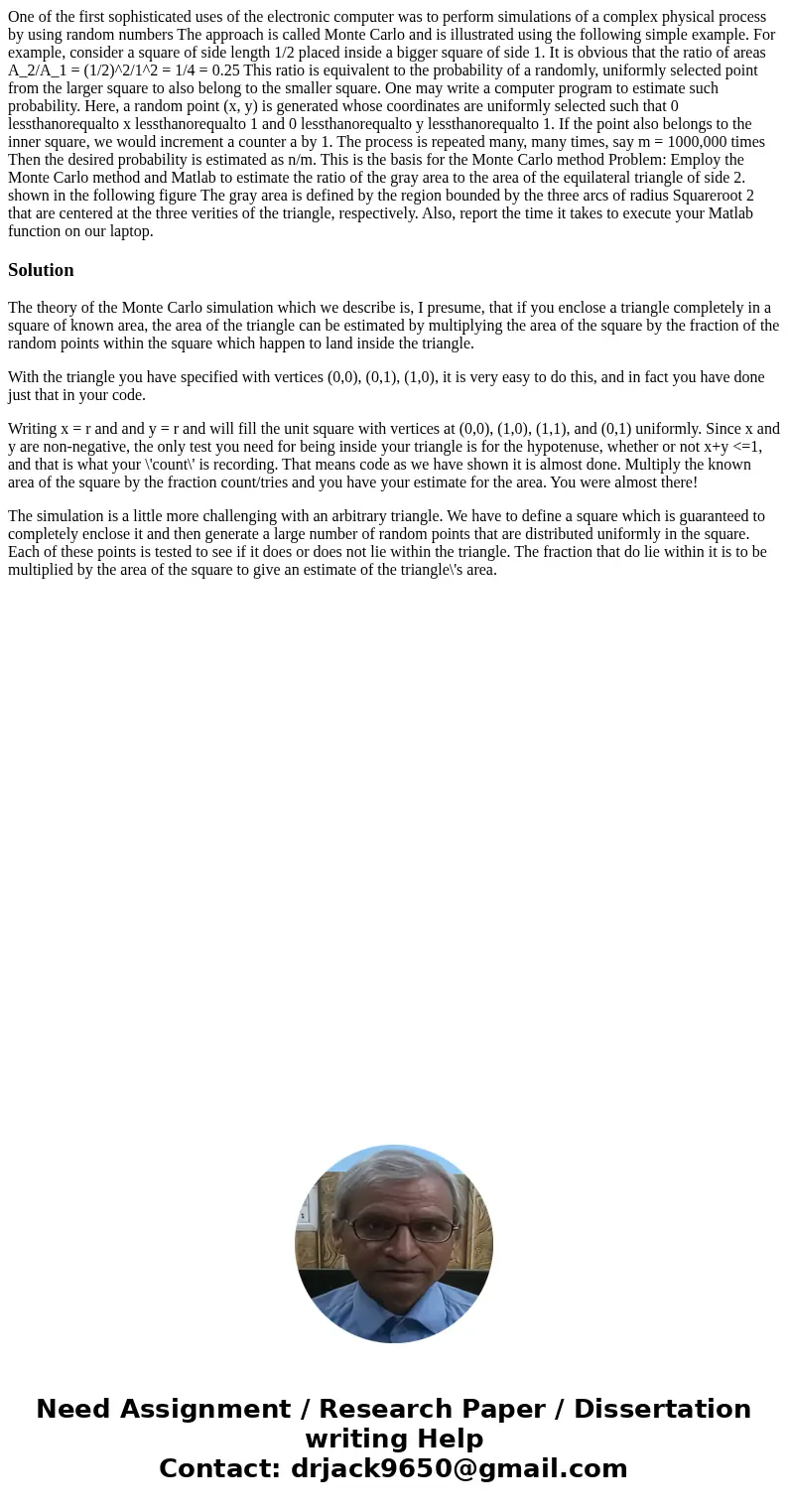One of the first sophisticated uses of the electronic comput
Solution
The theory of the Monte Carlo simulation which we describe is, I presume, that if you enclose a triangle completely in a square of known area, the area of the triangle can be estimated by multiplying the area of the square by the fraction of the random points within the square which happen to land inside the triangle.
With the triangle you have specified with vertices (0,0), (0,1), (1,0), it is very easy to do this, and in fact you have done just that in your code.
Writing x = r and and y = r and will fill the unit square with vertices at (0,0), (1,0), (1,1), and (0,1) uniformly. Since x and y are non-negative, the only test you need for being inside your triangle is for the hypotenuse, whether or not x+y <=1, and that is what your \'count\' is recording. That means code as we have shown it is almost done. Multiply the known area of the square by the fraction count/tries and you have your estimate for the area. You were almost there!
The simulation is a little more challenging with an arbitrary triangle. We have to define a square which is guaranteed to completely enclose it and then generate a large number of random points that are distributed uniformly in the square. Each of these points is tested to see if it does or does not lie within the triangle. The fraction that do lie within it is to be multiplied by the area of the square to give an estimate of the triangle\'s area.

 Homework Sourse
Homework Sourse